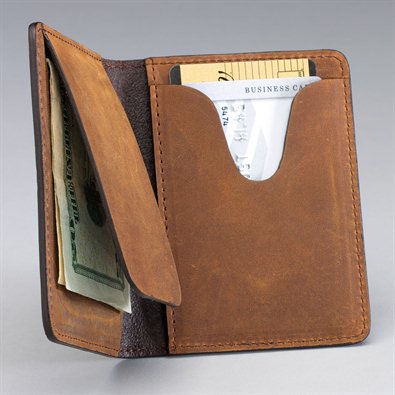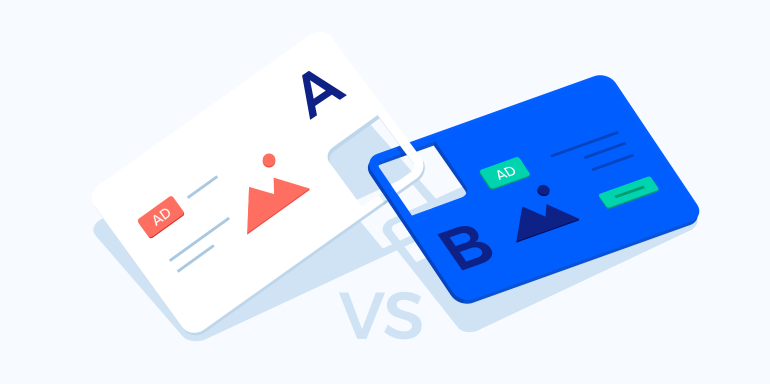
This strategy involves the purchase of government bonds and other securities to inject liquidity into the financial system. While QE has been effective in stimulating economic growth and preventing immediate recessions, questions arise regarding its long-term consequences and the potential for delayed recessions. In this article, we will explore the future of quantitative easing and its impact on the timing and severity of recessions. Quantitative easing—QE for short—is a monetary policy strategy used by central banks like the Federal Reserve. With QE, a central bank purchases securities in an attempt to reduce interest rates, increase the supply of money and drive more lending to consumers and businesses.
The money or proceeds from the sale, received by the banks, will be used to expand private lending activities. If lending increases, money circulating in the economy will likewise increase. The same goes for shoppers or consumers, encouraging them to buy more things on credit.

In January 2015, the bank changed tack, and ECB President Mario Draghi announced €60bn in monthly purchases of euro-area bonds. This amount was increased to €80bn in March 2016 and continued to December 2018 (by which time it had been tapered down to €15bn monthly). Brexit was the next event that saw the BoE announce purchases of £60bn-worth of UK government bonds. The central bank also purchased £10bn of corporate bonds in August 2016 to allay concerns over the economic impact of Brexit.
Free Tools
In return, it promises to pay back a certain sum of money in the future, as well as interest in the meantime. Selling assets would reduce the money supply and cool off any inflation. When a country’s economy is stagnant or not performing well, the Central Bank will evaluate the causes or factors that affect the status quo. Usually, higher interest rates and inflation are the major factors that trigger an economic slump, especially when both are getting out of hand.
Ten-year Treasury yields in May went above 3% for the first time since 2018. The Fed used quantitative easing in the wake of the 2008 financial crisis to restore stability to financial markets. In 2020, in the wake of the financial fallout of the COVID-19 pandemic, the Fed once again leaned on quantitative easing, growing its balance sheet to $7 trillion. One downside is that quantitative easing increases the Fed’s holdings of Treasurys and other securities.
QE replaces bonds in the banking system with cash, effectively increasing the money supply, and making it easier for banks to free up capital, so they can underwrite more loans and buy other assets. In 2020, the Fed announced its plan to purchase $700 billion in assets as an emergency QE measure following the economic and market turmoil spurred by the COVID-19 shutdown. This involves the Central Bank increasing the money supply and using these electronically created funds to buy government bonds or other securities. When the fed funds rate was cut to zero during the Great Recession, it became impossible to reduce rates further to encourage lending. Instead, the Fed deployed QE and began purchasing mortgage-backed securities (MBS) and Treasuries to keep the economy from freezing up.

If the widely anticipated third (and largest) stimulus bill makes its way through Congress in the next few days, that would be a massive relief on the fiscal side. The unlimited nature of the Fed’s pandemic QE plan was the biggest difference from the financial crisis version. Market participants got comfortable with this new approach after three rounds of QE during the financial crisis, which gave the Fed flexibility to keep purchasing assets for as long as necessary, Tilley says. By the third round of QE in 2013, the Fed moved away from announcing the amount of assets to be purchased, instead pledging to “increase or reduce the pace” of purchases as the outlook for the labor market or inflation changes. The Bank of Japan has been one of the most ardent champions of quantitative easing, deploying this policy for more than a decade.
The Rise and Fall Of Clutter: A Deeper Look At The On-Demand Storage Busines Model
In this article, we explain what quantitative easing is, how it works and what trading opportunities it can provide to investors and traders. Reported that gross fixed capital formation was growing at an average quarterly rate of 0.4%, lower than the average rate from 2009 through 2018. Economists were unable to determine whether or not growth would have been evident without this quantitative easing program. After quantitative easing was introduced in 2009, there was a partial recovery. Building on the lessons of the Great Recession, the Fed relaunched quantitative easing in response to the economic crisis caused by the Covid-19 pandemic. Policymakers announced plans for QE in March 2020—but without a dollar or time limit.
End of an Era of Risk Management Suppression – CME Group
End of an Era of Risk Management Suppression.
Posted: Wed, 13 Sep 2023 06:59:31 GMT [source]
Quantitative easing is a form of monetary policy in which a central bank, like the U.S. Federal Reserve, purchases securities through open market operations to increase the supply of money and encourage bank lending and investment. QE policies have been implemented globally, however, their impact on a country’s economy is often debated. If there were awards for the most controversial economic terms, “quantitative easing” (QE) would win the top prize.
Does Quantitative Easing Cause Inflation?
To summarise, Quantitative Easing will increase the rate of inflation as there is an increase in money supply. This will then increase interest rates which means banks are more likely example of vertical analysis to lend out money. For example, when the Fed began discussing tapering its quantitative easing programme in 2013, bonds experienced a rapid sell-off while stocks became more volatile.
- This shift in policy would provide additional support for inflation, potentially creating further economic imbalances.
- QE increases the price of financial assets other than bonds, such as shares.
- Central banks usually resort to quantitative easing when their nominal interest rate target approaches or reaches zero.
- When this happens, the Treasury department removes them from cash balances, and thus the money it has “created” by buying the securities has effectively disappeared.
- The best place to start is by reading directly from the source – on the website for the Federal Reserve’s monetary policy.
The inflation rate in the U.S. economy dropped to a 4.2 percent year-over-year annual rate. Not yet where the Fed wants it, but it is heading in the right direction. The path that Mr. Powell and the Fed followed was one of “quantitative” tightening. The steady reduction in the amount of securities the Fed held outright on its balance sheet.
To carry out QE central banks create money by buying securities, such as government bonds, from banks, with electronic cash that did not exist before. The new money swells the size of bank reserves in the economy by the quantity of assets purchased—hence “quantitative” easing. Like lowering interest https://1investing.in/ rates, QE is supposed to stimulate the economy by encouraging banks to make more loans. The idea is that banks take the new money and buy assets to replace the ones they have sold to the central bank. That raises stock prices and lowers interest rates, which in turn boosts investment.
We stopped reinvesting the proceeds from maturing bonds in February 2022. By helping prevent even larger increases in unemployment, it is likely to have reduced income inequality. The evidence also shows the impact of QE has varied significantly between the different times (we call them ‘rounds’) we used it. The largest impact on the economy was probably after the first round (2009).
What is Quantitative Easing (QE)
QE has been “hugely effective” in the early parts of both the most recent coronavirus crisis and the financial crisis, according to Tilley. “In March 2020, the illiquidity in the Treasury market was striking; it was scary,” he says. Some of these policies may, on the one hand, increase inequality but, on the other hand, if we ask ourselves what the major source of inequality is, the answer would be unemployment. So, to the extent that these policies help – and they are helping on that front – then certainly an accommodative monetary policy is better in the present situation than a restrictive monetary policy. What seems to have happened is that the Fed’s stimulus tended to go into financial markets and not into the building of real capital expenditures.
The prices of these assets increase which means the yield on those assets decrease. The sellers of these assets use the money they received from the bank to invest in riskier assets and investments such as company shares and the stock market. Central banks have recently used quantitative easing to mitigate the impact of the Covid-19 pandemic.
Does quantitative easing cause inflation?
Central banks’ purchases of government securities artificially depress the cost of borrowing. Normally, governments issuing additional debt see their borrowing costs rise, which discourages them from overdoing it. In particular, market discipline in the form of higher interest rates will cause a government like Italy’s, tempted to increase deficit spending, to think twice. Not so, however, when the central bank acts as bond buyer of last resort and is prepared to purchase government securities without limit. The main monetary policy tool of the Federal Reserve is open market operations, where the Fed buys Treasurys or other securities from member banks.
What Would Happen If the Fed Incurred Losses? – Investopedia
What Would Happen If the Fed Incurred Losses?.
Posted: Wed, 30 Aug 2023 07:00:00 GMT [source]
For example, the housing bubble spurred by QE caused home prices to soar, but the rising prices were disconnected from the actual values of the homes. Some experts worried that the massive amount of toxic loans on its books might cripple the Fed like they did the banks, but the Fed has an unlimited ability to create cash to cover any toxic debt. Plus, it was able to sit on the debt until the housing market recovered.
To stimulate the economy, this policy is often considered the last technique and put into place when other standard policies of the Central Bank don’t work. During the coronavirus pandemic, between March and July 2020, the Fed purchased $3tn in financial assets and engaged in a bond-buying programme from August 2020. Monthly bond purchases of $120bn were pledged to support the economy’s recovery from the pandemic as vaccinations were rolled out. While quantitative easing helped stimulate US economic growth and lower interest rates, it also lead to asset bubbles by cheapening the dollar. An asset bubble refers to the dramatic increase in the price of an asset that is not supported by the underlying value of the said asset. For example, the housing bubble spurred by quantitative easing caused home prices to rise, not correlated to the actual values of the homes.
Low interest rates can encourage companies to invest and spend more, causing price rises and eventual inflation. In order to counter these effects, central banks may reduce the money supply through quantitative tightening. Ideally, the funds the banks receive for the assets will then be loaned to borrowers at attractive rates. The idea is that by making it easier to obtain loans, interest rates will remain low and consumers and businesses will borrow, spend, and invest. According to economic theory, increased spending leads to increased consumption, which increases the demand for goods and services, fosters job creation, and, ultimately, creates economic vitality. “Those operations were small and often temporary. QE is different, influencing longer-term yields, and the size of QE operations is much larger.”
For that reason, QE policies are considered to be expansionary monetary policies. The goal of this policy is to ease financial conditions, increase market liquidity, and encourage private bank lending. However, if interest rates are already very low, central banks must look to other means to increase the monetary base. Quantitative easing entails the creation of new bank reserves that are used to purchase government bonds (for example, from pension funds). This increases bond prices, which reduces bond yields and lowers interest rates in the real economy.